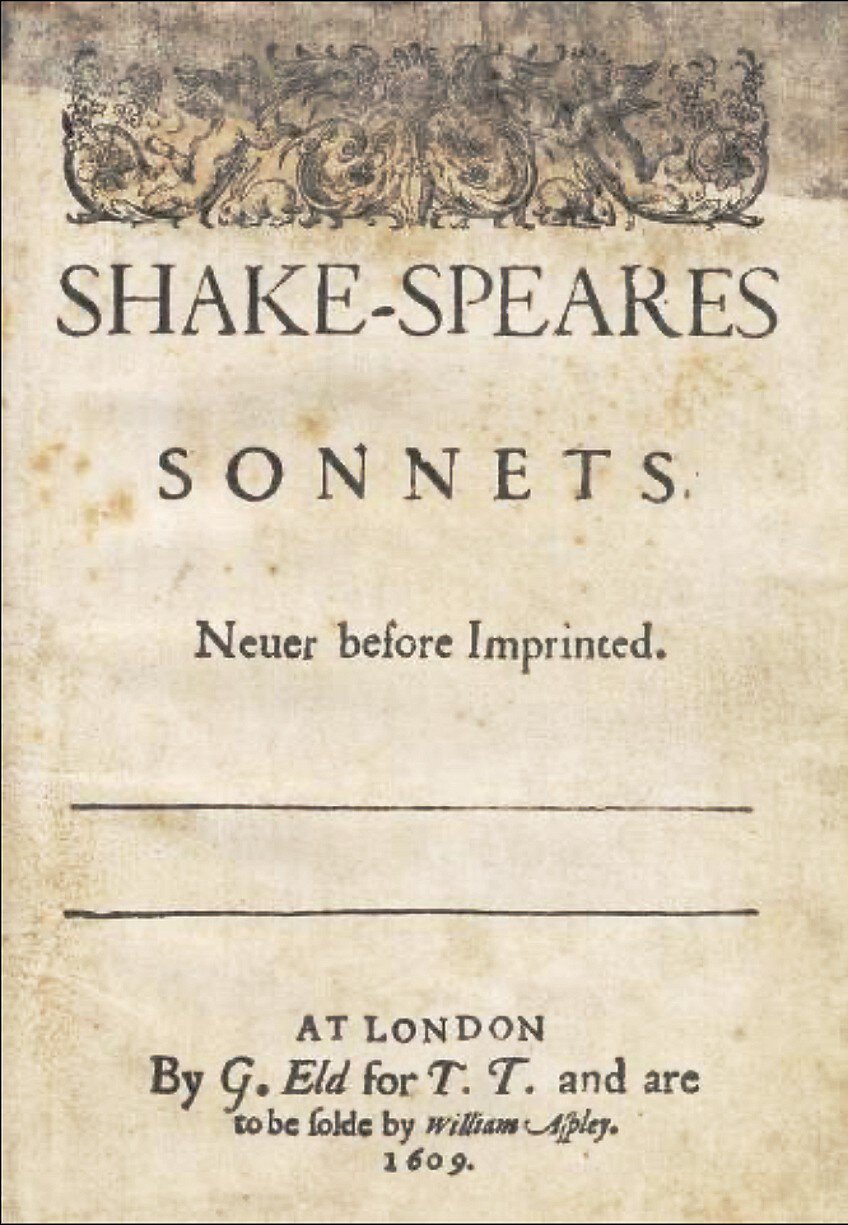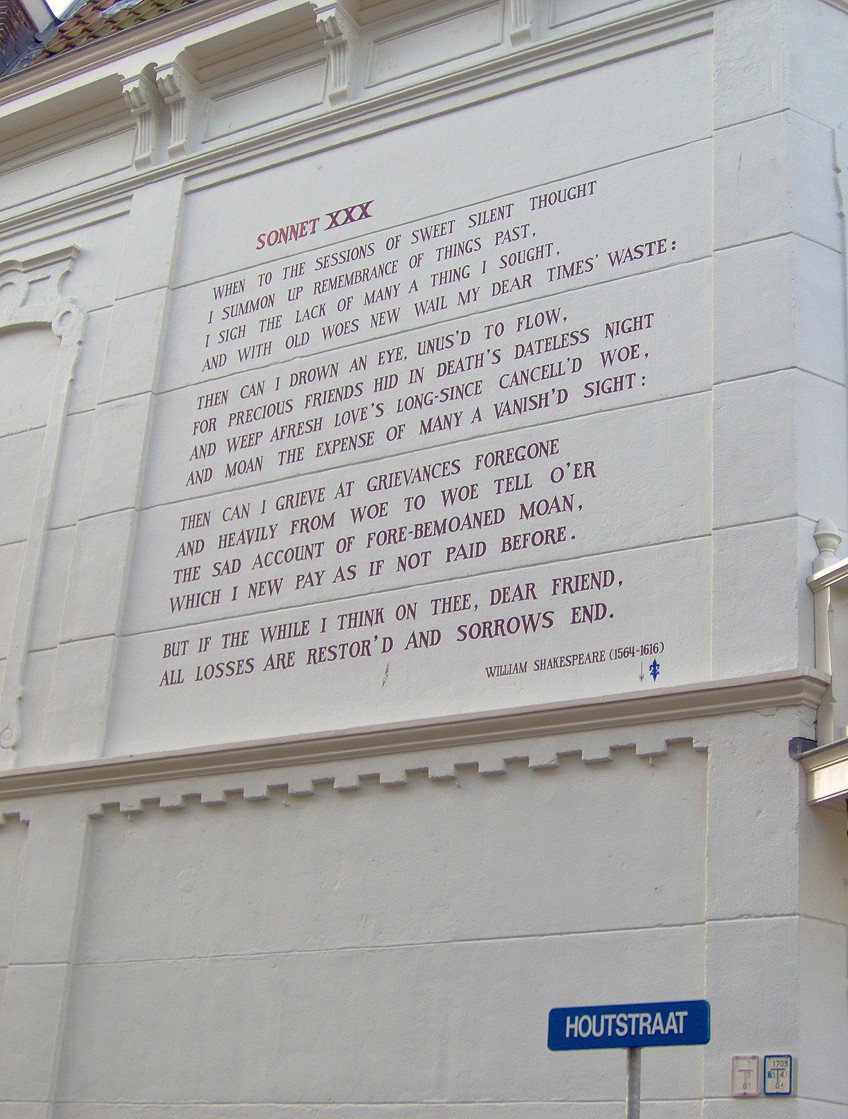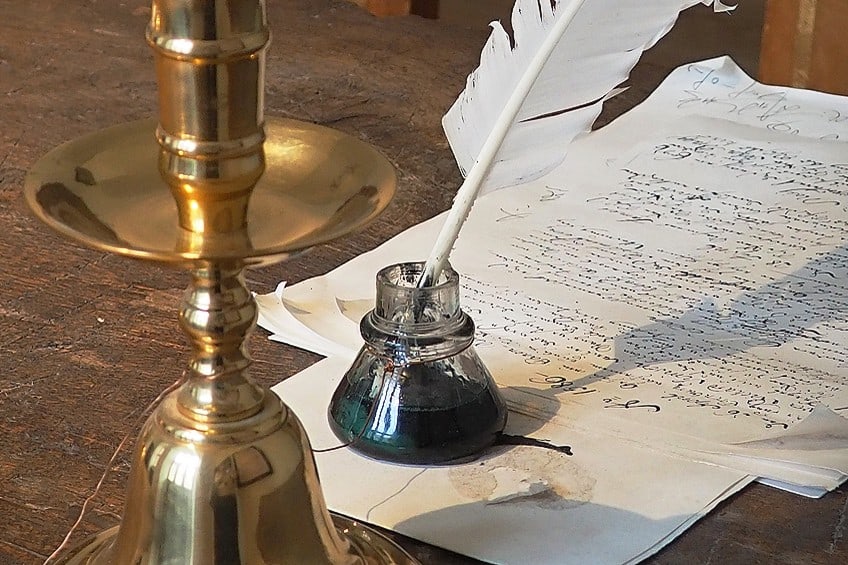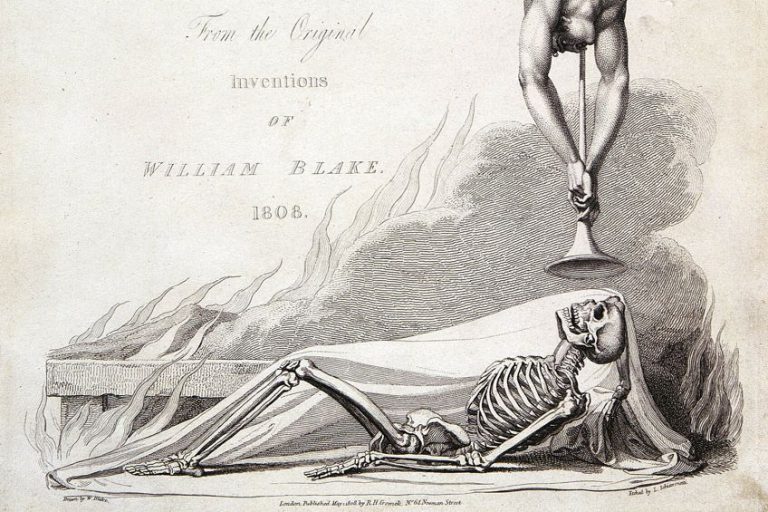What Is a Shakespearean Sonnet? – Crafting Beauty in 14 Lines
What is a Shakespearean sonnet? What is the structure of a Shakespearean sonnet? What is the rhyme scheme of a Shakespearean sonnet? These questions, and many more, will be examined over the course of this article as we look at how to write a Shakespearean sonnet through a discussion of the form and a number of Shakespearean sonnet examples. All that we can now do is get started and attempt to understand this famous sonnet form!
Table of Contents
What Is a Shakespearean Sonnet?
A Shakespearean sonnet is a particular variety of sonnet that rose to prominence during the Elizabethan period in England. For this reason, this sonnet structure is sometimes known as an Elizabethan sonnet or even as an English sonnet. However, it is best known as a Shakespearean sonnet because of William Shakespeare’s comprehensive use of this particular sonnet structure in his famous collection of 154 sonnets. The basic structure of a Shakespearean involves the use of fourteen lines, which is common across all sonnet types.
What differentiates the Shakespearean from other varieties, is the use of a specific rhyme scheme. This rhyme scheme alters the general structure of the sonnet too.
In terms of this famous poetic form, the rhyme is structured as ABAB CDCD EFEF GG. This shows the way in which the Shakespearean is arranged around three quatrains with alternating rhyme before ending on a final rhyming couplet. It is also common for each of these lines to make use of iambic pentameter. However, each of these features of the Shakespearean sonnet will be discussed in more detail below.

The Shakespearean sonnet has become the most common form of the sonnet variety of poetry in the English language. While there are other types of sonnets, such as the Petrarchan and the Miltonic, the Shakespearean sonnet has become synonymous with English sonnet writing.
The association with William Shakespeare has also likely contributed to the prominence of this particular sonnet form.
The History of the Shakespearean Sonnet
The Shakespearean sonnet did not actually originate with William Shakespeare regardless of what the commonly used name might suggest. Instead, the Shakespearean sonnet saw its origins significantly earlier. It is seen as a continuation of the Italian sonnet that was popular in the 14th century. This was at the time of Petrarch, who is considered to be one of the great masters of the sonnet structure. However, by the 16th century, the Shakespearean had managed to make its way into the English language. It was introduced by Thoms Wyatt, but later elaborated on and developed its rhyming structure, meter, and quatrain arrangement through the work of Henry Howard.
This particular form would be emulated by William Shakespeare in his own poetry.
Although Shakespeare’s particular poems, while using the form that was generally expected at the time, were also quite different in their application of themes and topics. Many of his poems rebelled against some of the more traditional aspects of the sonnet structure. His work would be considered revolutionary, and for this reason, he is seen as the popularizer of the Shakespearean sonnet. The way in which William Shakespeare popularized this particular sonnet structure is self-evident. This variety of sonnet can also be called the English or Elizabethan sonnet, as has been mentioned, but that is not what most call it. It has become almost universally termed the “Shakespearean sonnet”.

This is because Shakespeare wrote a collection of 154 sonnets that were published after his death. It was common at the time for many pieces of writing to be circulated as unpublished manuscripts, and many agree that this was likely the case with Shakespeare’s sonnets. He likely did not intend for his poems to be published at all. There are some that are unfinished and some of the originals include errors. This has led to the idea that this was never a planned publication. Regardless of whether or not the publication of these poems was consensual or not, they have become the most influential sonnets in the English language.
These poems have become synonymous with Shakespeare himself and some of them are as famous as his plays. His use of the form that has become known as Shakespearean and his exploration of themes of love, mortality, time, and beauty have had a profound influence on sonnets in the English language. The influence of William Shakespeare on the Shakespearean sonnet is self-evident in the name, and the fact that the form that Shakespeare adopted is still used to this day should indicate something about the longevity of this form.
The Shakespearean sonnet structure would continue to be adopted after the death of Shakespeare, but none of the later users of this form would ever become as influential as William Shakespeare.
How to Write a Shakespearean Sonnet
When it comes to how to write a Shakespearean sonnet, there are various aspects of the form that need to be taken into account. Each of these aspects of the form is important when looking at a more formalized poetic structure. While many types of poems do not necessarily make use of a particularly formalized and rigid structure, Shakespearean sonnets do. This is why we will examine the way in which rhyme, iambic pentameter, the volta, themes, and inspiration should all be taken into account for those who wish to write Shakespearean sonnets.

The Use of Rhyme in Sonnets
The rhyme scheme of a Shakespearean sonnet is one of the most notable features of this particular form. It has already been stated that a sonnet of any description makes use of fourteen lines, but the way in which different types of sonnets are differentiated from one another is through the use of their rhyme scheme. The Shakespearean sonnet rhyme scheme is likely the most famous in the English language. This particular form makes use of an ABAB CDCD EFEF GG rhyme scheme. This means that there is alternating rhyme during the first three quatrains, or sets of four lines, until the final rhyming couplet at the end.
This is the standard rhyme scheme of the Shakespearean sonnet, and if it does not make use of this rhyme scheme, then it is not technically a Shakespearean sonnet at all.
The Use of Iambic Pentameter in Sonnets
Another of the integral parts of the Shakespearean sonnet is meter. Meter is the beat of a poem, and when it comes to sonnets, they often make use of iambic pentameter. They do not need to make use of this particular form of meter, but it is the most common. Iambic pentameter in sonnets is the most typical form and it is the form that was favored by William Shakespeare himself.
The basic idea behind iambic pentameter in sonnets is that it means each line is arranged around a specific syllable count.
Each line contains a total of ten syllables, and these syllables are arranged in five pairs. Each pair features an alternating stress for each syllable. The first is unstressed and the second is stressed. This is usually portrayed as “da-DUM” five times in a row.

The idea behind iambic pentameter in sonnets, and in any other poetic form, is that it is meant to resemble more ordinary speech. It is seen as more pleasing to the ear and therefore aids in the general rhythm of the poem as a whole. The sonnets of William Shakespeare exclusively used iambic pentameter. It is one of the aspects of poetry for which he is best known.
The Use of the Volta in Sonnets
The volta is a fairly simple idea. It is the idea that there is eventually a “turn” in the sonnet. A turn is the point at which the sonnet features some kind of a shift away from what it had once been about. The reason for this is because sonnets are typically arranged in a specific way. They explore some kind of an idea, such as love, and then shift to have some kind of a commentary on that love, such as by comparing it to an eternal feeling. In a Shakespearean sonnet, the volta is often seen before the last two lines of the poem. The reason for this is because the final two lines in a Shakespearean sonnet are arranged as a pair of rhymes, and so it is a good point at which to shift the meaning of the poem to end on something different and perhaps more poignant than what had been discussed up until that particular point.
The volta has become commonly found throughout many poems, but it is most notable in the sonnet.
The Use of a Theme and Topic in Sonnets
Theme and topic are important aspects of any poem, but when it comes to Shakespearean sonnets, there are often certain ideas that are explored more often than others. There are technically no restrictions on what any poem can be about, and the same is true of Shakespearean sonnets. However, themes such as love, loss, longing, and similar supposedly universal ideas are some of the most common that are explored. When it comes to the work of William Shakespeare himself, after whom Shakespearean sonnets are named, the sonnets explore ideas like the immortality of love, the reality and idealism of beauty, and so on. These are often lofty ideas that seek to elevate the poetic subjects above where they may otherwise be in the real world.

The Use of Inspiration in Sonnets
Where should you find inspiration for sonnets? Many of the greatest sonnet writers, such as William Shakespeare, took their inspiration from real-world people. Many of his poems are about a few specific individuals that he fixated on in a variety of ways. This allows a sonnet to explore themes and topics that are simultaneously lofty, in that they are often idealized, while also being relatable, as they often feature comparisons to real people that readers will likely understand. For instance, treating someone you love as a perfect creature when nothing is truly perfect. However, it may also be beneficial to someone who wants to learn how to write a Shakespearean sonnet to learn from the masters. To learn how to write sonnets and where to gain inspiration, it is often best to also read a few sonnets. Learn what you can learn from those who have come before.
Below, we will examine a number of Shakespearean sonnet examples from the Bard himself, and perhaps they may serve as inspiration for those who wish to write this form.
Shakespearean Sonnet Examples
As has been discussed, while William Shakespeare was not actually the originator of what would come to be known as the “Shakespearean sonnet”, it has come to be known under this moniker for a reason. That reason is that Shakespeare has become seen as the master of this form, and for that reason, the examples of this form that we will examine today are entirely the works of William Shakespeare. It should still be remembered, regardless of this, that others have also made use of this particular style. Let’s have a look at a few Shakespearean sonnet examples.
Sonnet 24: Mine eye hath play’d the painter and hath stell’d
| Date Published | 1609 |
| Type of Poem | Elizabethan/Shakespearean sonnet |
| Rhyme Scheme | ABAB CDCD EFEF GG |
| Meter | Iambic pentameter |
| Topic | Conceit |

Many of Shakespeare’s sonnets concern themselves, in some way or another, with the concept of love, and this particular sonnet is yet another of those that arranges itself in this way. However, it is written as a means of examining conceit. This particular topic was fairly commonly explored in many instances of Renaissance thought, and as such, this particular Shakespearean sonnet is often considered to be one of the more commonplace varieties. It is much more conventional than some of the more famous poems for which Shakespeare is known.
Regardless of this, it is still part of the Fair Youth sonnet sequence for which Shakespeare has become so well known.
Sonnet 29: When, in disgrace with fortune and men’s eyes
| Date Published | 1609 |
| Type of Poem | Elizabethan/Shakespearean sonnet |
| Rhyme Scheme | ABAB CDCD EFEF GG |
| Meter | Iambic pentameter |
| Topic | Love |
Most of the sonnets for which Shakespeare is known fall within what is known as the Fair Youth sequence. This particular sonnet sequence is concerned with a beautiful young man who has not yet settled down. In this sonnet, the poem is concerned with this young man, and it is an expression of adoration for him. The poem examines the speaker’s depressive mental state as he considers himself to be a failure in comparison to those around him, but his love for this Fair Youth character allows him to feel better.
This sonnet has become known as one that explores the idea that love can help to heal one of their mental wounds and to aid them in their lives.
Sonnet 98: From you have I been absent in the spring
| Date Published | 1609 |
| Type of Poem | Elizabethan/Shakespearean sonnet |
| Rhyme Scheme | ABAB CDCD EFEF GG |
| Meter | Iambic pentameter |
| Topic | Longing |

In comparison to some of the other sonnets in the Fair Youth sequence of Shakespeare’s work, this poem does not concern itself with love in some of the more traditional senses of the word. Instead, it is concerned with the way in which being separated from your love can induce intense longing in those who have been separated. The speaker in the poem discusses the way in which he cannot enjoy spring despite it being a temperate month because he does not have the one that he loves with him any longer.
This kind of idea has become fairly commonplace in much of love poetry, as there is often an examination of the way in which one can feel lost without the one that you love.
Sonnet 106: When in the chronicle of wasted time
| Date Published | 1609 |
| Type of Poem | Elizabethan/Shakespearean sonnet |
| Rhyme Scheme | ABAB CDCD EFEF GG |
| Meter | Iambic pentameter |
| Topic | Beauty |
Some of the most famous poems that Shakespeare ever wrote are concerned with beauty and love, and this poem is no different. While this sonnet is not as famous as one such as Shall I compare thee to a summer’s day, it does explore similar ideas. The poem explores the idea that if ancient writers had known of the beauty of the Fair Youth, then they would have written on him as the speaker writes on him.
In addition to this, it states that the words of these ancient writers, these prophecies of beautiful people, were a prefiguration of the Fair Youth.
Sonnet 138: When my love swears that she is made of truth
| Date Published | 1609 |
| Type of Poem | Elizabethan/Shakespearean sonnet |
| Rhyme Scheme | ABAB CDCD EFEF GG |
| Meter | Iambic pentameter |
| Topic | Deception |

This is the only poem of those that have been discussed today that is not concerned with the Fair Youth. Instead, this poem is concerned with the Dark Lady character. This figure, who has been extensively studied by Shakespearean scholars, is depicted as a deceptive figure who has lied to the speaker. It has been suggested that this particular poem is autobiographical, but that cannot be known for certain. Regardless, the sonnet reveals the other side of what sonnets can explore, as the speaker and subject lie to one another, and deceive one another, yet they remain together regardless of that fact. This subject matter makes this one of the most interesting and less conventional of the Shakespearean sonnet examples.
And so, we arrive at the conclusion of our discussion that has attempted to answer the question: “What is a Shakespearean sonnet?”. We have examined the history of the form, how to write a Shakespearean sonnet, and a number of Shakespearean sonnet examples. Hopefully, you have walked away from this look at Shakespearean sonnets with a better understanding and appreciation of the form, but there are many more sonnets of this variety that can be found, enjoyed, analyzed, and perused throughout the English language.
Frequently Asked Questions
What Is a Shakespearean Sonnet?
A Shakespearean sonnet is a type of poem that is a subset of sonnets. All sonnets are made up of fourteen lines, but the primary distinguishing characteristic of the Shakespearean sonnet is its rhyme scheme. This separates the Shakespearean sonnet from other sonnet structures, such as the Petrarchan sonnet. This particular variety of sonnets is named after William Shakespeare, who is one of the most famous users of this form.
What Is the Structure of a Shakespearean Sonnet?
The Shakespearean sonnet makes use of a specific structure. It makes use of fourteen lines, as is standard for a sonnet, it includes a Shakespearean sonnet rhyme scheme, and is generally arranged as a single, unbroken text. This means that there are usually no line breaks in a traditional Shakespearean sonnet, and the text is instead comprised of three quatrains and one rhyming couplet without the interruption of any line breaks.
What Is the Rhyme Scheme of a Shakespearean Sonnet?
The rhyme scheme of the Shakespearean sonnet is one of the most notable features of this particular form of poetry. The rhyme scheme is arranged as ABAB CDCD EFEF GG. This shows that it makes use of three quatrains, or sections made up of four lines, and each of these sections entails alternating rhyme. The poem then ends on a rhyming couplet. The final two lines of the Shakespearean sonnet have become one of the most notable aspects of the form.
What Is Iambic Pentameter in Sonnets?
All poems make use of some kind of meter, and Shakespearean sonnets are best known for a formalized variety of meter known as iambic pentameter. This is likely the most used example of meter in the English language. Iambic pentameter in sonnets entails the use of ten-syllable lines of five pairs, in which each pair makes use of an unstressed and stressed syllable. This particular type of meter is often considered to be pleasing to the human ear, while also being quite common.
Did Shakespeare Invent Shakespearean Sonnets?
Shakespeare did not create the sonnet style that is named after him. This variety, like the Petrarchan sonnet, originated in Italy and made its way into England several centuries later. However, William Shakespeare is considered to be the most famous user of this particular form, and so his name became attached to it. This came after the publication of the 154 sonnets that Shakespeare wrote, all of which make use of this particular structure.
What Is a Sonnet Sequence?
A sonnet sequence is quite a simple idea. It is simply a series of sonnets that are related to one another in some way. They can be related to one another in a very direct sense, such as through the continuation of a narrative, or they can be related through thematic similarity. Perhaps the most famous sonnet sequences are from William Shakespeare himself. His Fair Youth and Dark Lady sequences are immensely famous, and they entail specific characters who are discussed over the course of many poems.
Justin van Huyssteen is a freelance writer, novelist, and academic originally from Cape Town, South Africa. At present, he has a bachelor’s degree in English and literary theory and an honor’s degree in literary theory. He is currently working towards his master’s degree in literary theory with a focus on animal studies, critical theory, and semiotics within literature. As a novelist and freelancer, he often writes under the pen name L.C. Lupus.
Justin’s preferred literary movements include modern and postmodern literature with literary fiction and genre fiction like sci-fi, post-apocalyptic, and horror being of particular interest. His academia extends to his interest in prose and narratology. He enjoys analyzing a variety of mediums through a literary lens, such as graphic novels, film, and video games.
Justin is working for artincontext.org as an author and content writer since 2022. He is responsible for all blog posts about architecture, literature and poetry.
Learn more about Justin van Huyssteen and the Art in Context Team.
Cite this Article
Justin, van Huyssteen, “What Is a Shakespearean Sonnet? – Crafting Beauty in 14 Lines.” Art in Context. September 22, 2023. URL: https://artincontext.org/what-is-a-shakespearean-sonnet/
van Huyssteen, J. (2023, 22 September). What Is a Shakespearean Sonnet? – Crafting Beauty in 14 Lines. Art in Context. https://artincontext.org/what-is-a-shakespearean-sonnet/
van Huyssteen, Justin. “What Is a Shakespearean Sonnet? – Crafting Beauty in 14 Lines.” Art in Context, September 22, 2023. https://artincontext.org/what-is-a-shakespearean-sonnet/.









